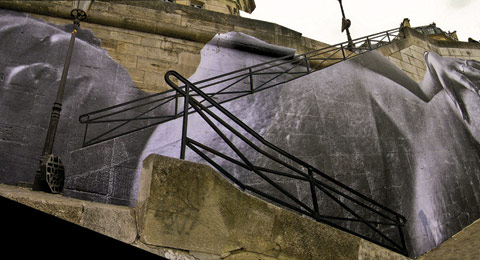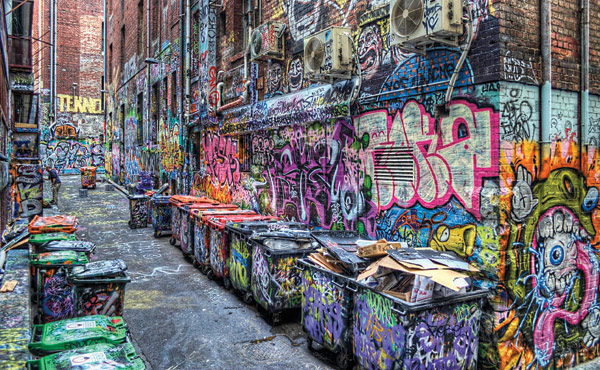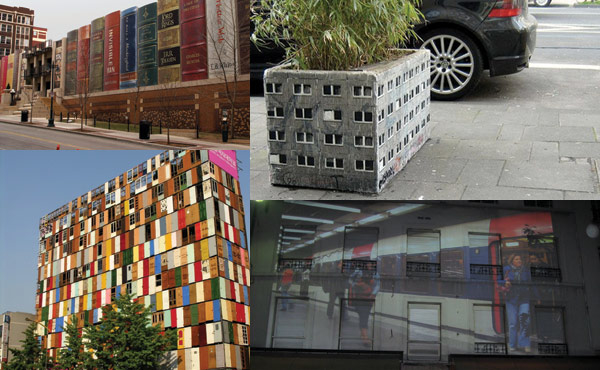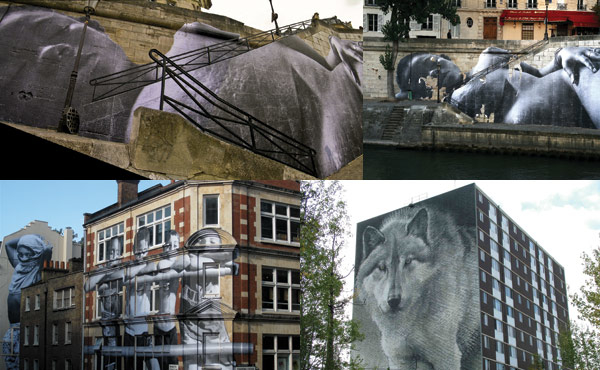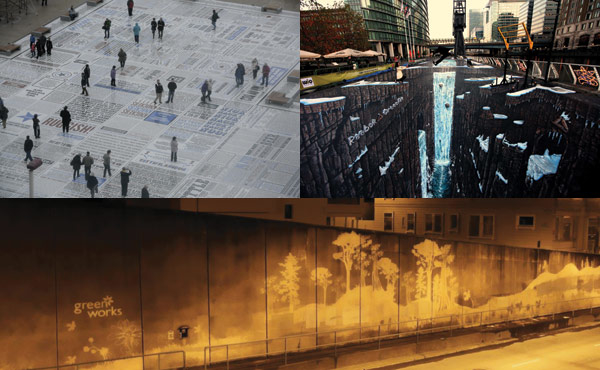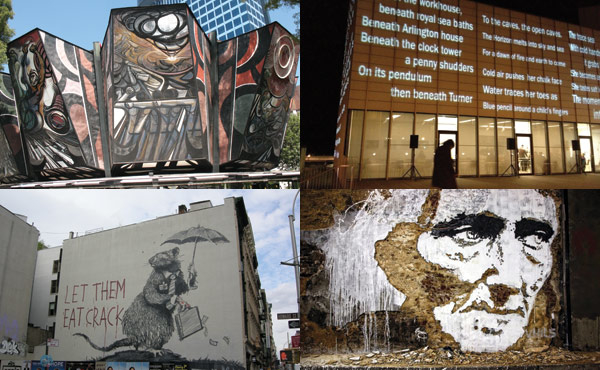Napisao: Arh. Alek A. Nebojić
Novi oblici artikulacija arhitektonskog izraza koji su rezultat promena nastalih u savremenom društvu koje diktira novu ulogu arhitektonskog delovanja i identiteta, naizgled potpuno nearhitektonski, nematerijalni, čak virtuelni, nalaze primenu u mnogim postojećim i novim strukturama. Arhitektonski izraz danas postaje sredstvo koje nastaje u sintezi sa vrednostima modernog doba i koje u takvom obliku može da obezbedi opstanak i dalji razvoj arhitekture i društva.
Generisanje novih potreba i vrednosti rezultat je razvoja koji ih uslovljava postavljajući akcenat na nove situacije u kojima prethodne vrednosti i potrebe bivaju ili zadovoljene ili zamenjene kao neodgovarajuće. Izmene u načinu života nastale usled tehološkog razvoja utiču na način korišćenja i percepiranja prostora i dolazi do formiranja drugačijih oblika aktivnosti. Funkcija postaje fleksibilna, menja obim i uslove neophodne za njeno ostvarivanje. Okvir novih oblika aktivnosti predstavlja refleksiju događaja, identifikuje momenat u vremenu i prostoru. Arhitektonski elementi danas stoje u odnosima koje definiše sam trenutak, događaj koji inicira nastanak prostora. Ti momenti ozbiljno se razlikuju od dosadašnjih trajnih ideja koncipiranih na univerzalnim vrednostima.
Prihvatanje promena i činjenice da su promene sve češće, dovelo je do formiranja neke vrste univerzalnog prostora koji je inteligentan, interaktivan i prilagodljiv. Na ovaj način oslobođen prostor menja ranije utvrđene hijerarhije arhitektonskih elemenata. Fleksibilna funkcija omogućava i inicira preusmeravanje pažnje na druge elemente arhitekture.
Fenomen spontane transformacije – improvizacije arhitektonskog fizičkog okvira koji ne menja samo svoj izraz već prvenstveno ulogu prema društvu dokaz je postojanja nezaustavljivog procesa promena. Ove promene, izazvane oderđenim potrebama i vrednostima, utvrđuju novu ulogu tog okvira. S obzirom na fleksibilnost funkcije od arhitekture se danas traži određena posebnost koja će privući korisnika na način koji je njemu blizak. Vizuelni identitet arhitekture više ne prikazuje sadržaj već ga promoviše i sam postaje sadržaj. Traganje za načinima na koje arhitektura može da ostvari novu ulogu vodi ka nastanku novih metoda i simbioza.
“Ornamenti” kao posrednici između korisnika i arhitekture vremenom su menjali svoje oblike i ne-oblike. Savremeni ornament danas podrazumeva pronalaženje načina na koji će se ostvariti komunikacija sa korisnikom/publikom. Promena ornamentacije odnosi se na promenu u ljudskoj svesti i na način na koji savremeni čovek percipira arhitekturu. Artikulacija arhitektonskih izraza se menja i prikazi postaju jasniji publici novog doba.
Društvo danas bazira svoju egzistenciju na protoku informacija. Arhitektura koja se čita u jednom momentu i u određenom kontekstu nije više dovoljna. Vrednost i opstanak određene arhitekture i njenog sadržaja zavise od broja informacija koje ona pruža. Uvođenje ovih novih vrednosnih parametara u arhitekturu vodi ka simbiozi arhitektonskih i informativnih sredstava.
Termin mapiranje oblika, preuzet iz virtuelnog sveta, na odgovarajući način opisuje ideju današnje predstave arhitekture. Pojam “mapiranje arhitekture” možemo uvesti u današnju arhitektonsku terminologiju kao izraz koji se odnosi na sredstvo komunikacije između površine oblika i korisnika/publike – na poseban, prilagođen vid prikaza željenih informacija. U skladu sa uslovom koji se odnosi na količinu informacija koje je potrebno pružiti, za sredstva mapiranja biraju se promenljiva, dinamična sredstva koja su čitljiva – bliska modernoj kulturi. Jezik arhitekture postaje multidisciplinarna mešavina koja na različite načine pokušava da dopre do korisnika ili ostvari određenu ideju.
Sinteza elektronskog i fizičkog prostora danas je otelotvorena u vidu urbanih i prostornih spektakla, umetničkih tvorevina i medijskih događaja koji animiraju arhitektonske površine čineći ih sredstvom komunikacije. Ovi hibridi nastali su kao odgovor na društvene težnje koje se odnose na aktivnosti kao što su kultura, marketing, zabava i rekreacija, i socijalna interakcija. Predstave koje se izvode nisu opsesije dizajnom i medijima, one govore o novoj kulturi, novim tehnikama i tehnologijama, novim interesima.
Snaga interesa koja podstiče promene u arhitekturi, nije destruktivna. Naprotiv, ona je vrlo važna jer usmerava, preispituje i usavršava stavove i pokazuje buduće mogućnosti i težnje. Ona arhitektura koja prihvata ove inicijative može dalje delovati u vidu povratne sprege na značajne drušvene aspekte.
Procesi koji su doveli do novih transformacija i sinteza baziraju se na prirodnim principima, uzročno-posledičnim odnosima. Kada se procenjuje njihova ispravnost potrebno je razumeti da slično evoluciji prirodnog sveta, ovi procesi nisu pitanje opstajućeg kvaliteta već kvalitetnog opstanka.
By: Arch. Alek A. Nebojić
New articulation of architectural expression, resulting from changes in modern society that dictates the role of architectural performance and identity, seemingly non-architectonic, non-material, even virtual, today is used in many existing and new structures. Architectural expressions, as the synthesis of the architectural language and values of modern times, become means of communication and in such form can ensure the survival and further development of architecture and society.
Generating new needs and values is the result of development that is placing emphasis on the new situations in which the previous values and needs are either satisfied or replaced as inappropriate. Changes in lifestyle, caused by technological development, affect usage and perception of space and lead to formation of different types of activities. Function becomes flexible, changing its scope and spatial requirements necessary for its implementation. The physical frame of a newly arisen function is a reflection of an event, and it identifies the moment in time and space. Interrelationships of the architectural elements are defined in a moment, they are a result of an event that initiates the formation of the space. These moments are significantly different from the previous permanent ideas conceived on universal values.
Acceptance of changes and the fact that changes are more frequent, led to forming of certain kind of universal space which is intelligent, interactive and adaptable. In this way liberated space changes previously established hierarchy of architectural elements. The flexible function allows and initiates accentuation of the other elements of the architecture.
The phenomenon of spontaneous transformation – improvisation of architectural physical frame, which does not only change its appearance, but also its role in society, is a proof of the existence of irreversible process of change. These changes, caused by certain needs and values, define a new role of that frame. Considering the flexibility of the function, architecture today has to provide certain singularity that will, in an identifiable way, attract users. The visual identity of architecture no longer displays the content, but it promotes it and becomes content itself. Searching for ways in which architecture can accomplish new role, creates new methods and symbiosis.
“Ornaments” as intermediary elements between users and architecture, have been changing their forms and non-forms over the years. Today modern ornamentation means finding ways of realizing the communication with the user/audience. The change in ornamentation relates to the change in human consciousness and in the way in which modern man perceives architecture. The articulation of architectural expressions has changed and the representations have become more intelligible to the modern public.
The society nowadays bases its existence on the flow of information. Architecture, perceived at on point in a particular context is no longer sufficient. The value and the survival of a particular architecture and its contents depend on the amount of information it offers. The introduction of these new parameters of value into the architecture leads to the symbiosis of architectural and informational means.
The term “mapping”, taken from the virtual world, appropriately describes the idea of new architectural expressions. The term “mapping architecture” can be introduced into today’s architectural lexicon as a term that refers to the means of communication between the surface of the form and the users/audiences as a particular, adapted form of displaying desired information. In accordance with the requirement relating to the amount of information that is necessary to provide, the chosen means of mapping are selected to be variable, dynamic and “readable” – inherent to modern culture. The language of architecture becomes a multidisciplinary mixture, which, in different ways, is trying to reach the user or to realize an idea.
The synthesis of digital and physical space is now embodied in the form of urban and spatial spectacles, artistic creations and media events that animate architectural surfaces, making them a means of communication. These hybrids were created in response to social tendencies which relate to activities such as culture, marketing, entertainment and recreation, and social interaction. The “performances” are not obsessions with design and media; they talk about a new culture, new techniques and technologies, new interests.
The force of modern interest which initiates the change in architecture is not destructive. Rather, it can be very productive – it directs, reviews and improves concepts and it shows future possibilities and aspirations. Only architecture open to these initiatives can further, as a feedback mechanism, influence the important aspects of social life.
The processes which have led to new transformations and synthesis are based on natural principles, on a cause and effect relationships. When assessing their validity one needs to understand that, similarly to the evolution of the natural world, these processes are not the issue of the surviving of the quality but of a qualitative survival.


